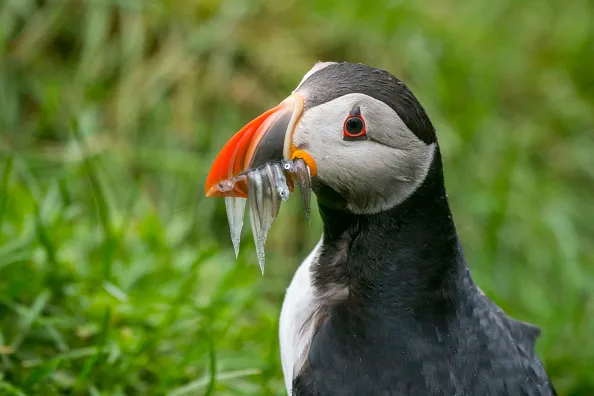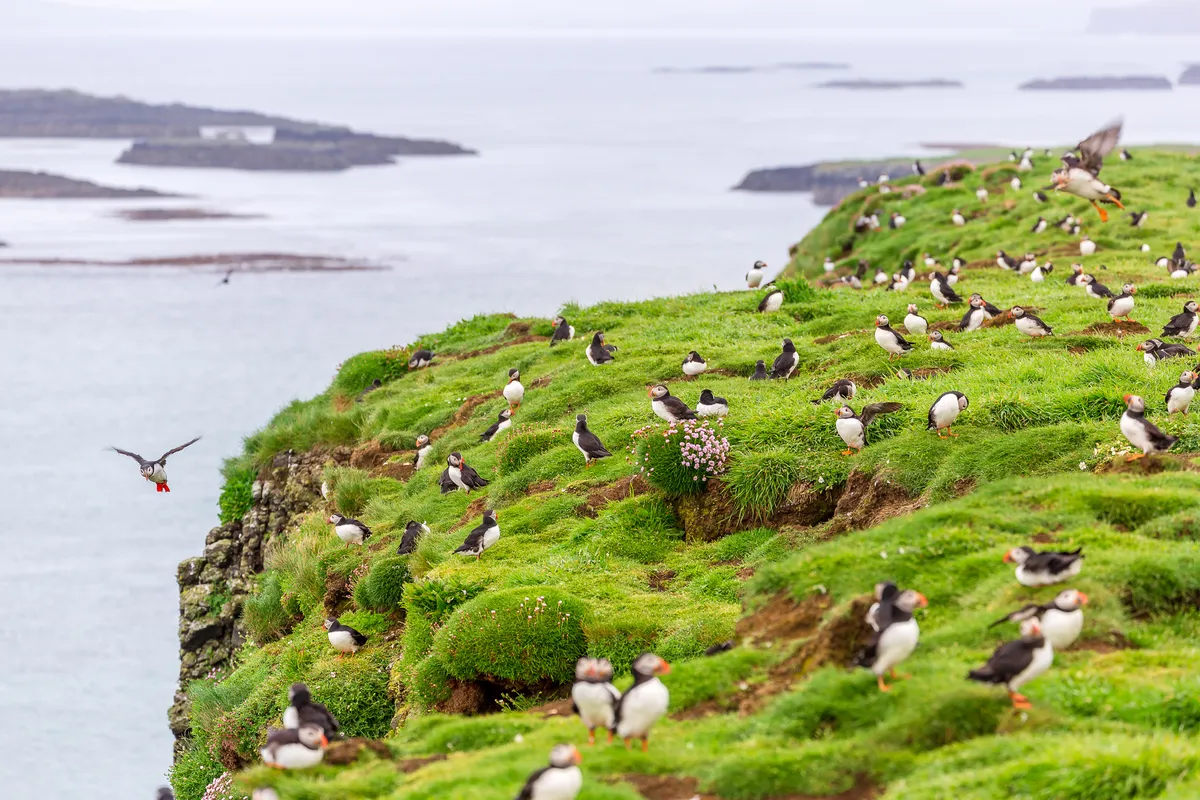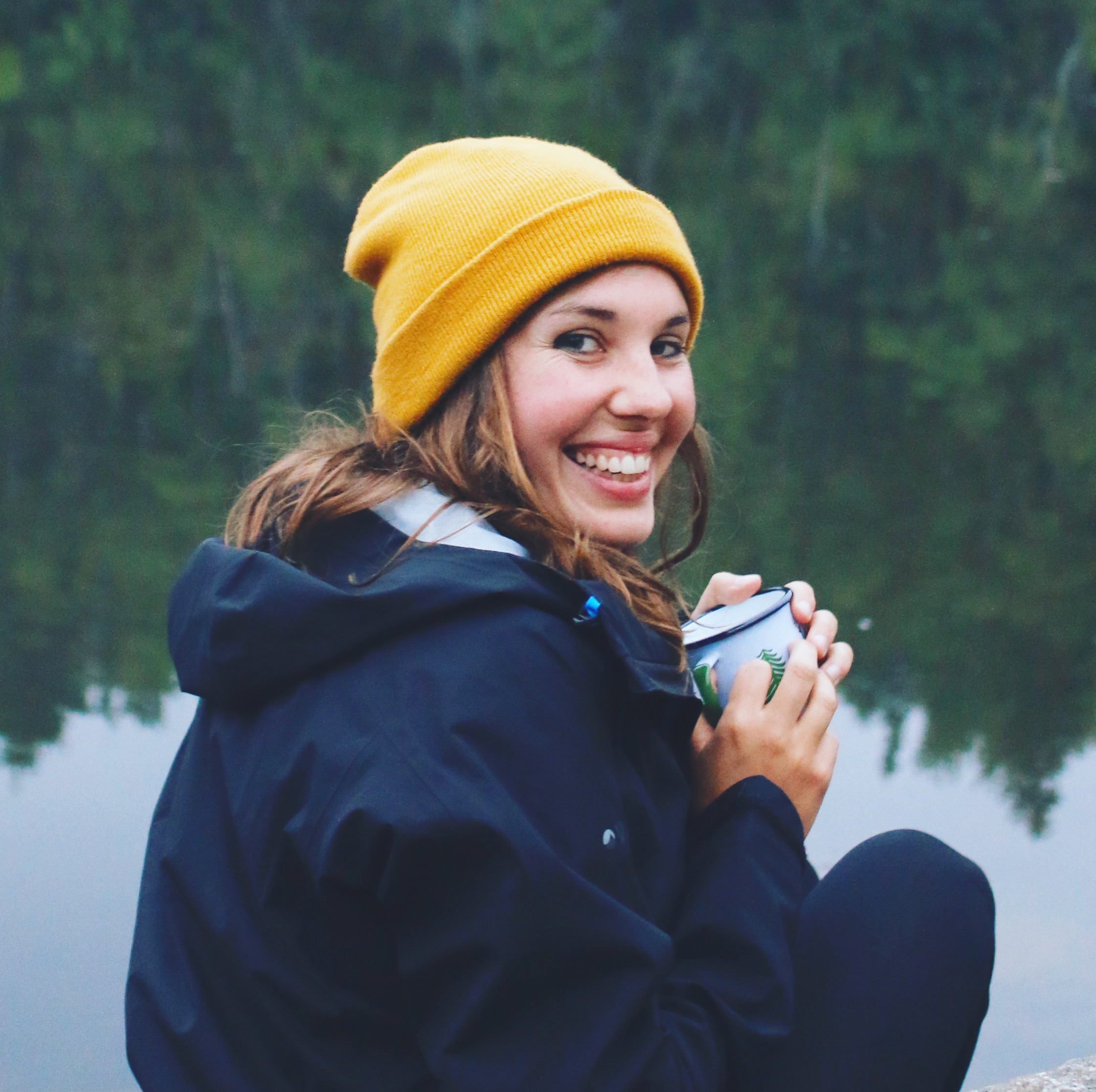The remote Scottish island of Lunga has a population of zero – or thousands, depending on whether you are a human or a puffin.
Where is Lunga Island and the Treshnish Isles?
Comprising eight principal islands ranging from less than 4 hectares to 60 hectares, the Treshnish Isles form an archipelago situated just 3km west of Mull. Extending along a northeast-southwest axis for approximately 11km, this diverse group of islands offers a unique and captivating natural habitat, making it an ideal destination for wildlife enthusiasts and nature lovers alike.
Located in the Treshnish Isles, Lunga is renowned as the premier spot for observing puffins. From mid-April to early August, visitors can delight in the presence of these charming seabirds.
How to get to Lunga Island?
To reach Lunga, the largest of the Treshnish Isles, you must catch a boat from Oban on the Scottish mainland, or from the Isle of Mull.
As you approach (most often on rolling, rocky seas), the “green jewel” appears temptingly on the horizon. Once off the boat and on to solid ground, you can walk up to the top of Harp Rock, where from May to August wild birds lay their eggs in burrows on the cliff edge or hidden in the rock face below.
Lunga Island puffins

This beautiful slice of the Inner Hebridean archipelago, described as “a green jewel in a peacock sea”, has been deserted since the 1850s, but each summer it plays host to a huge colony of one of the most charming British birds of all: the Atlantic puffin.
Lunga is a Site of Special Scientific Interest, designated to protect the fragile breeding grounds of the puffins (classed as vulnerable) and 46 other bird species. Razorbills, guillemots, storm petrels and kittiwakes all breed on Lunga, but it is the clown-faced puffins that steal the show.
From April, the puffins arrive on Lunga to dig their burrows; each pair guards a single egg. After 40 days, the chicks hatch and the adults get busy feeding their young. They rush in and out of burrows, stalk about among the grass and the sea-pink flowers or swoop low back to their broods with bills full of glittering silver sand eels.
When do puffins leave Lunga?
In July or August, the chicks are ready to leave their burrows, and Lunga’s puffin population returns to life at sea.
Explore Lunga Island
If you can tear yourself away from the puffins, the rest of Lunga is a wonderful place to ramble, and small enough to walk around in an hour or so.
All that remains of the hardy people who once eked out a living here are the ruins of a few black houses on the site of an old village to the north-east of the island, the rest is just craggy green cliffs surrounded by sparkling sea, and the growling call of the puffins.

Puffin tours
Lunga’s puffins have little fear of humans, and if you stand or sit still to watch them, they will happily potter about very close to you – a dream for bird-lovers and wildlife photographers alike.
However, if you're not visiting the island directly, you can book tours to see them from a boat. Staffa Tours has great reviews on TripAdvisor, and there are other tour companies to check out, including Turus Mara, Highland Explorer Tours and West Coast Tours.
Where to stay near Lunga Island
From hotels, self-catering cottages to eco pods, there are lots of options when it comes to accommodation on the Isle of Mull, which is a good departure point for visiting Lunga Island. Check out offerings from Treshnish holiday cottages, Vrbo, Booking.com Trip and Expedia.
Looking for more inspiration?
Our experts have put together comprehensive guides to puffins and British seabirds, as well as round up to Scotland's islands.
